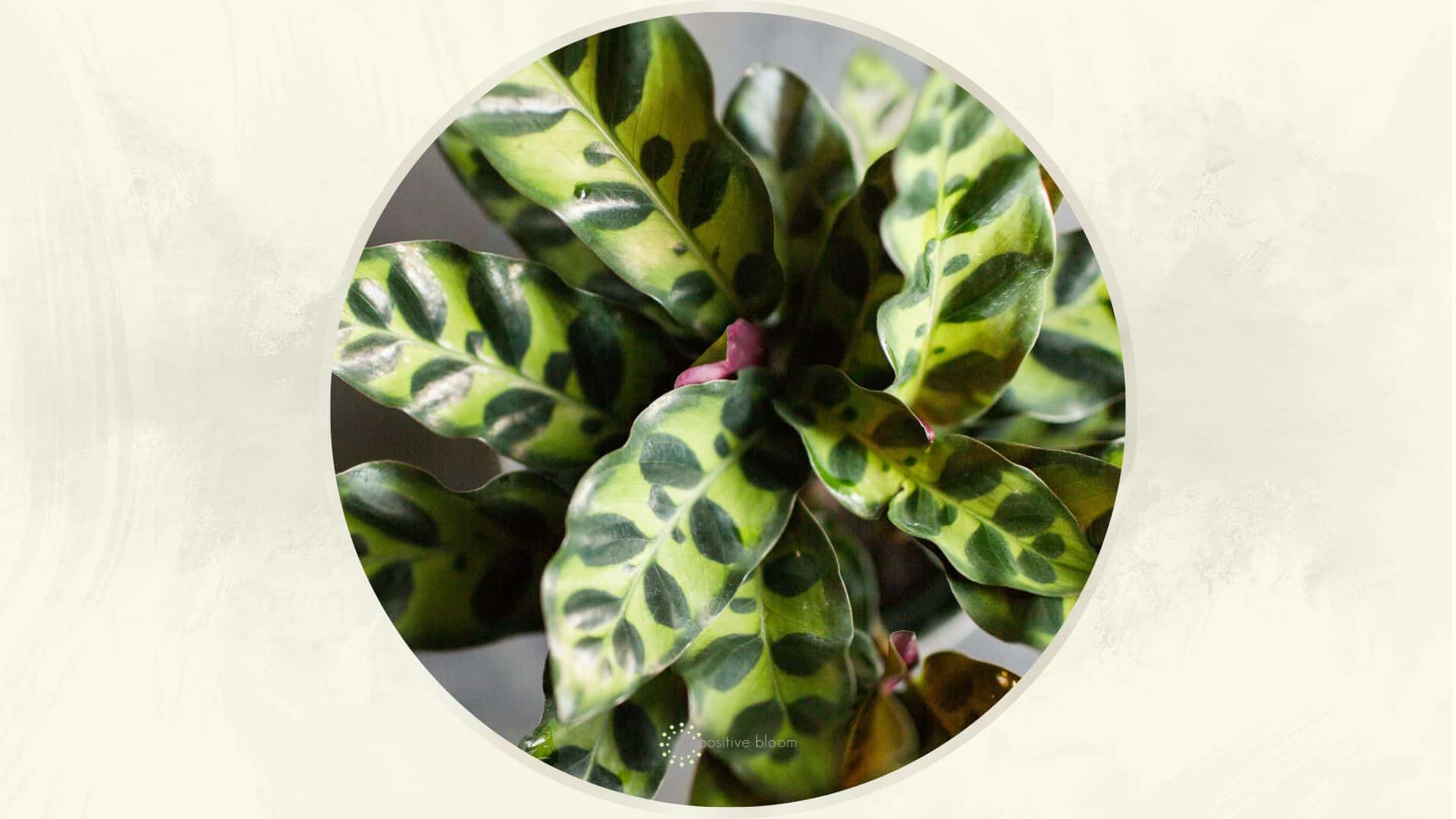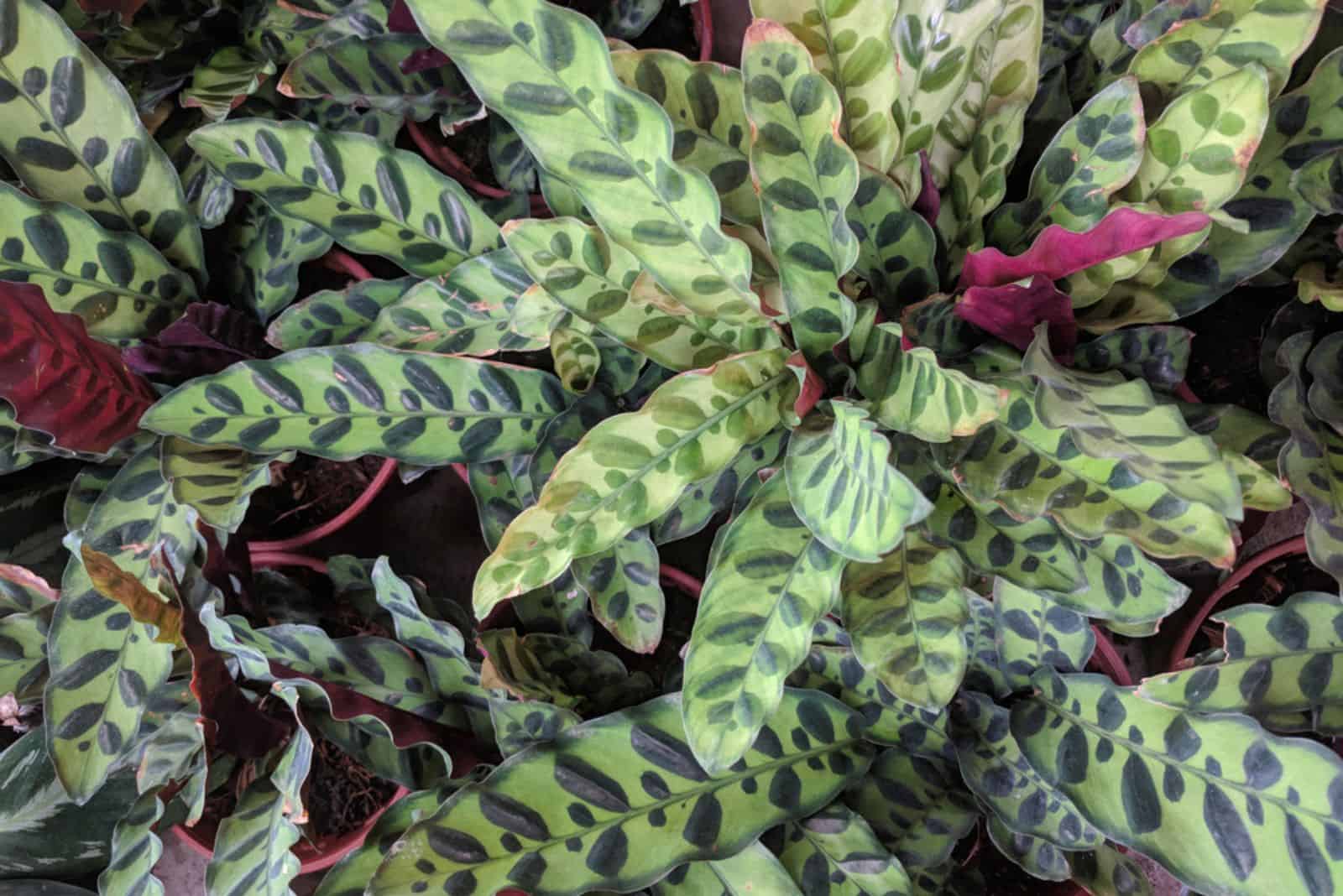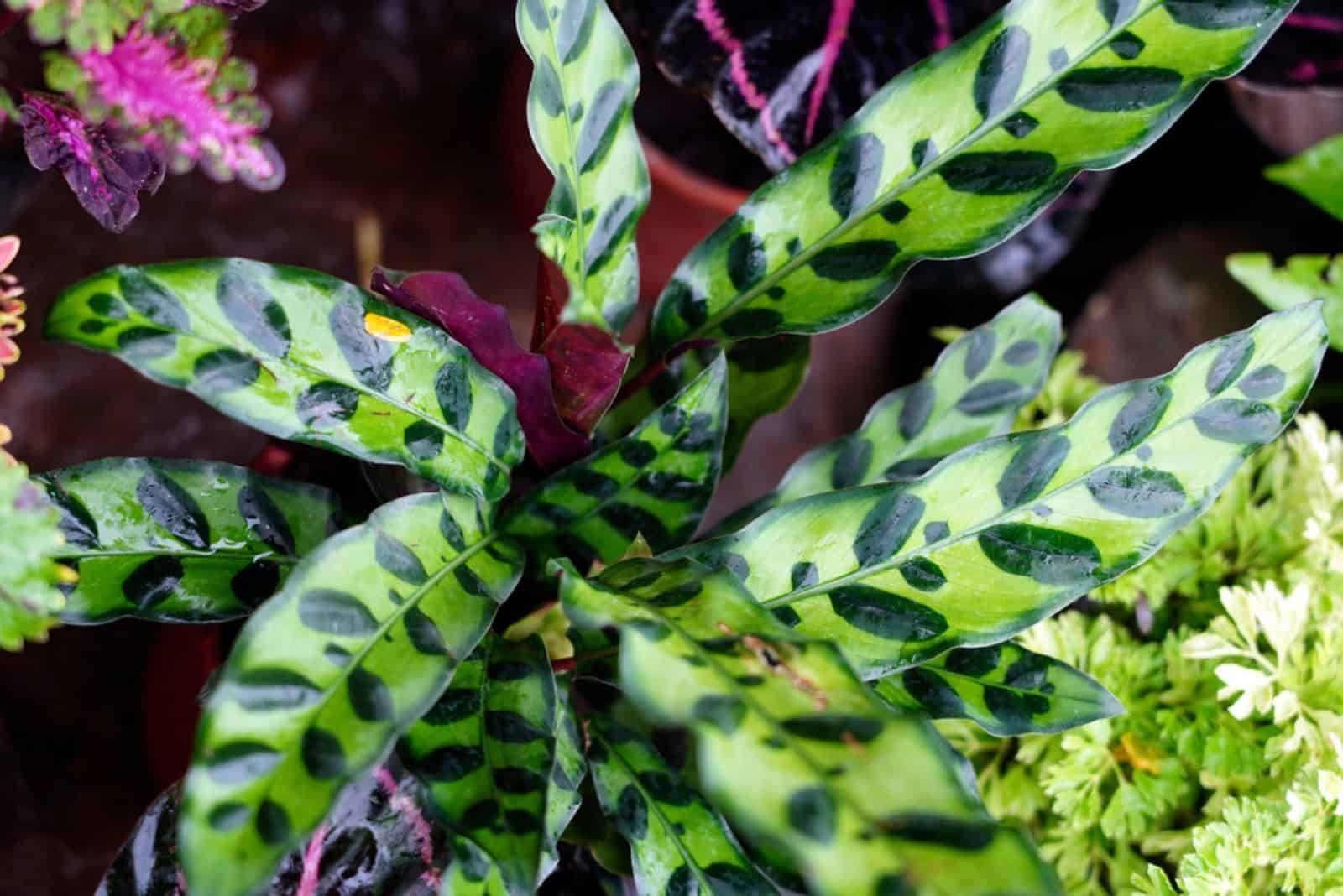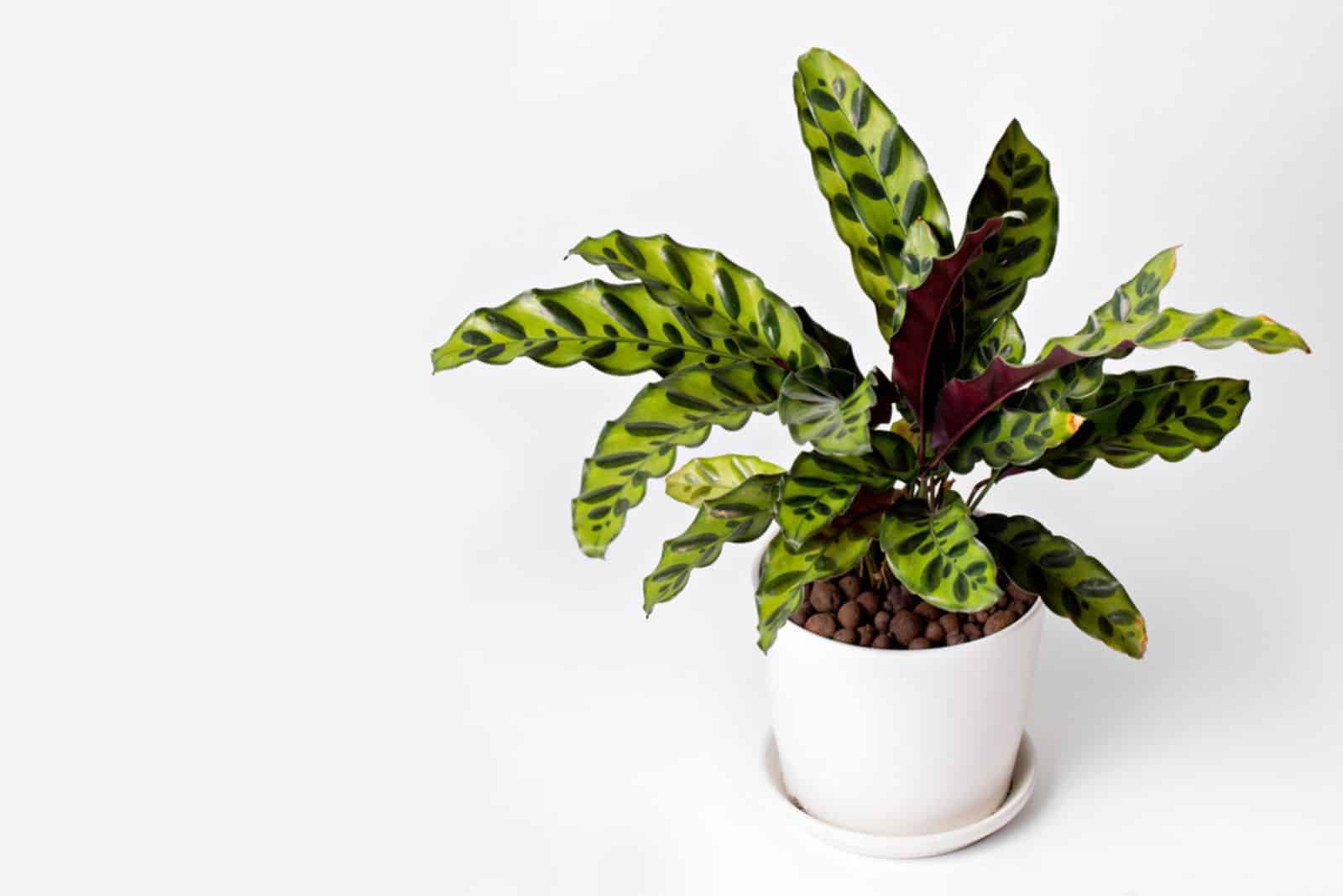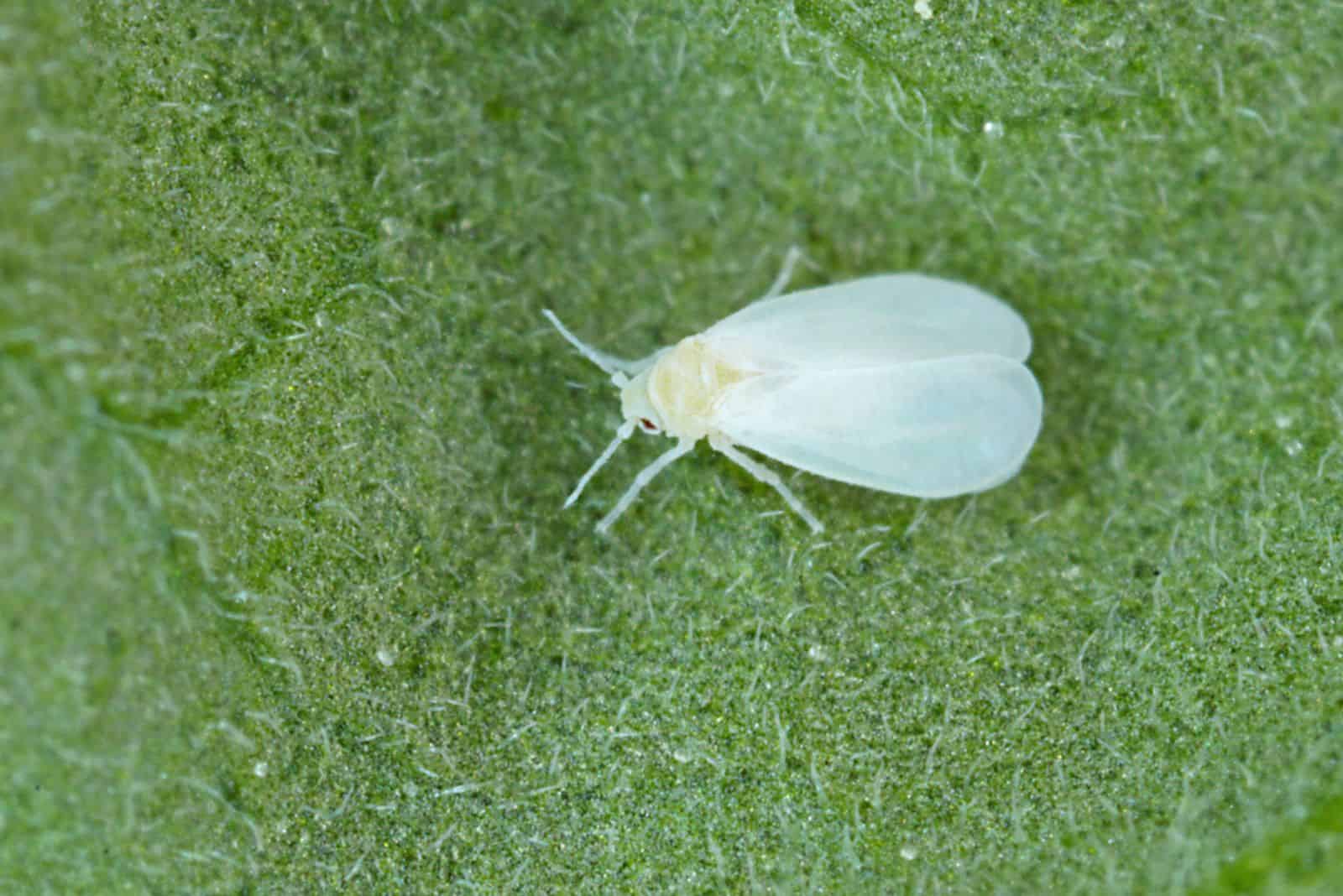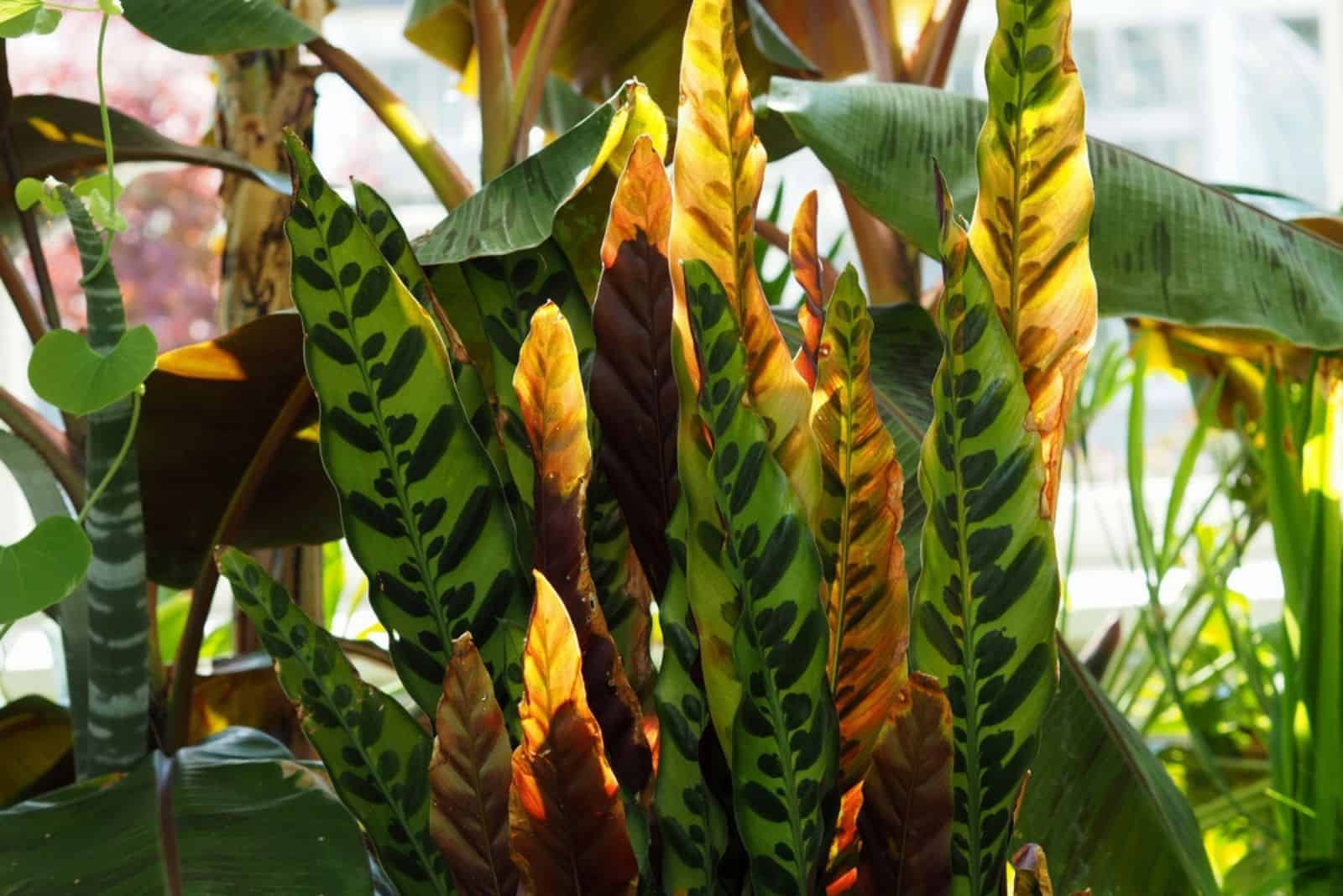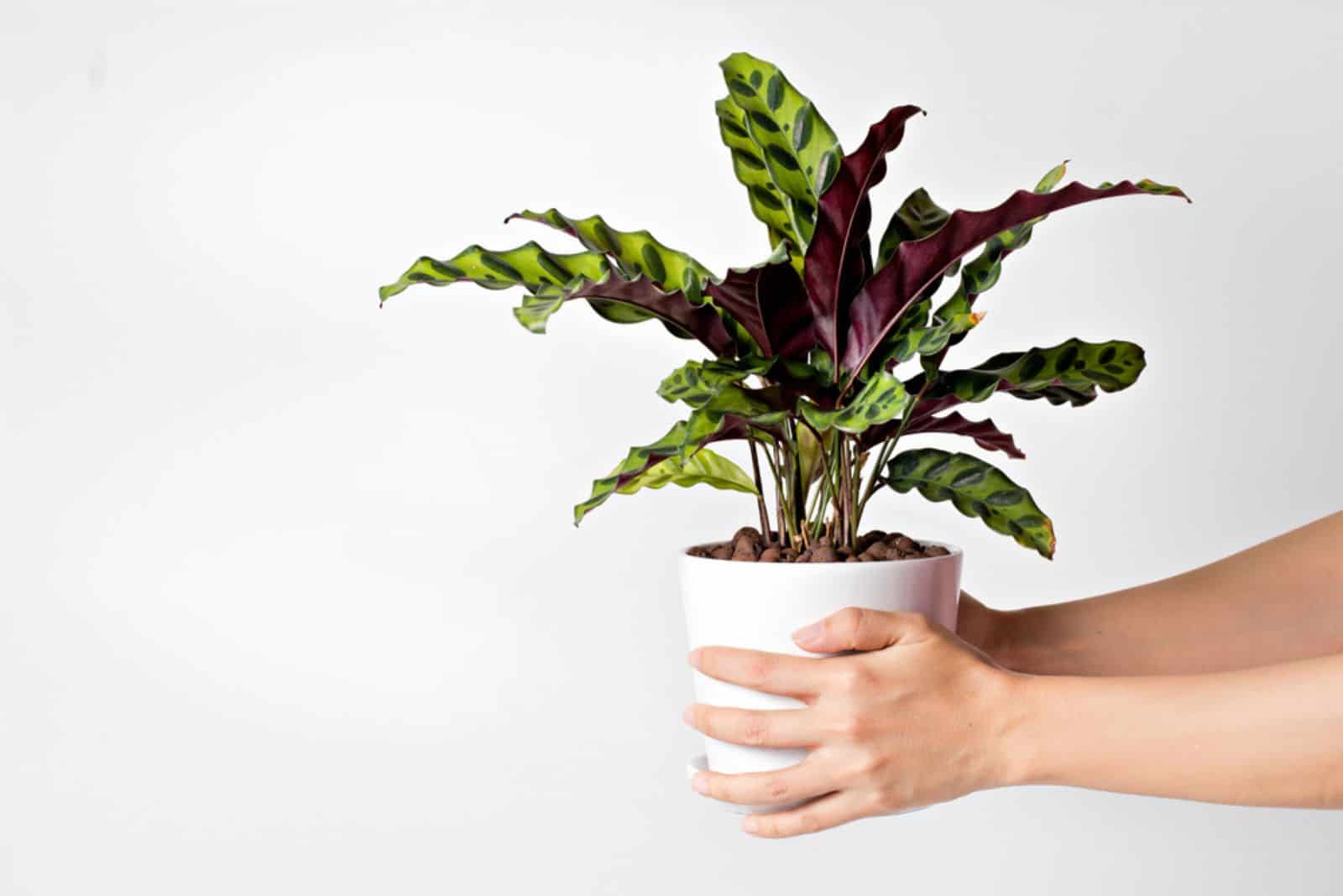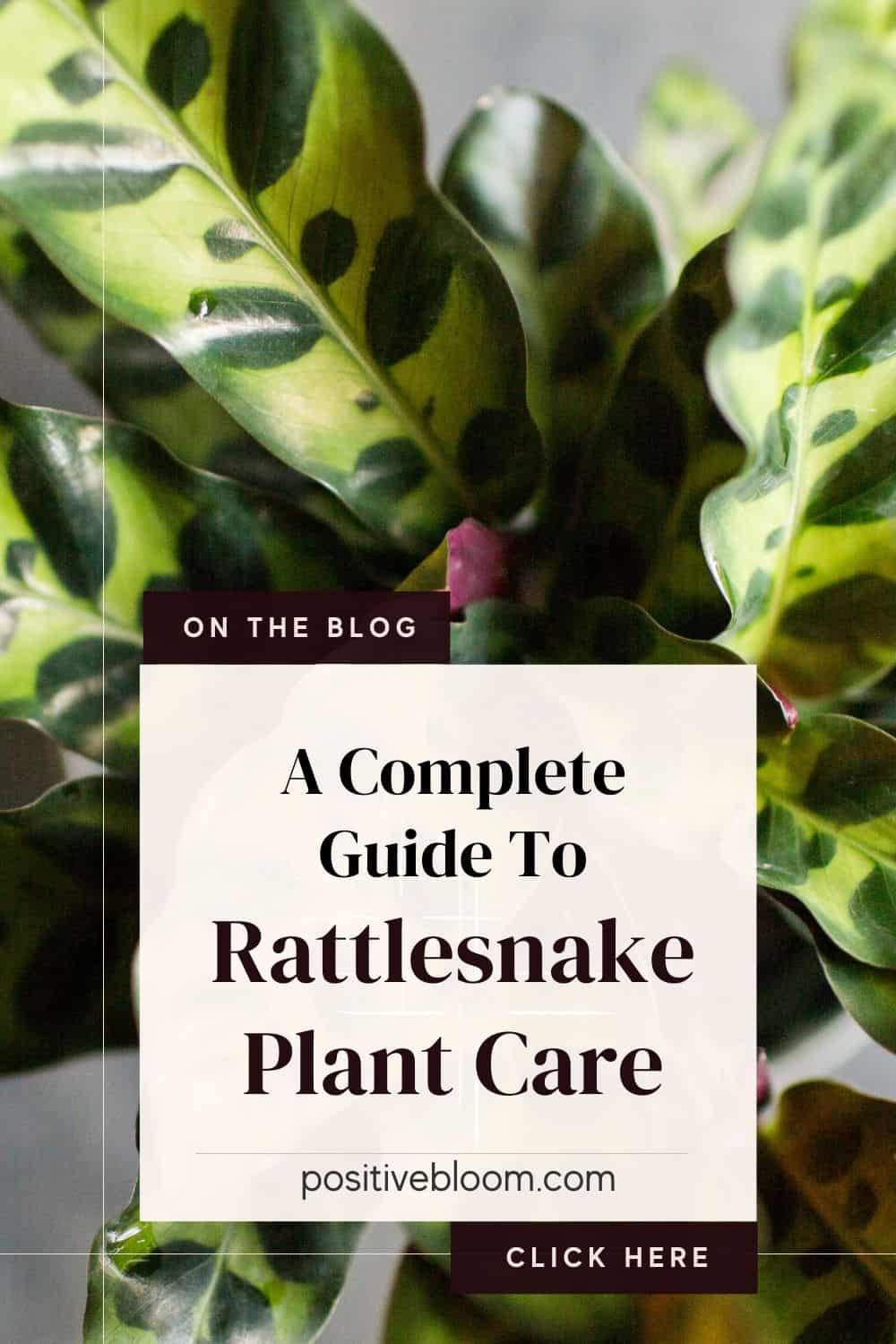If you want a unique tropical plant for your side table display, look no further than the rattlesnake calathea.
The long and narrow serrated leaves look like a deadly arrow shaft, or would if not for the green background and darker variegations.
Many gardeners want to know if rattlesnake plant care is complicated.
And the answer is no. It is your typical prayer plant, and you can care for it the same way you would for your marantha or calathea.
They also get afflicted with similar issues, but we’ll cover all these topics in the following sections (and even include some cultivars for you to choose from).
Before we get there, let’s learn some basic info about this plant:
| Scientific name: | Goeppertia insignis (formerly named Calathea lancifolia or Calathea insignis) |
| Native habitat: | Rainforests of Brazil |
| Growth rate: | Moderate growth rate |
| Size: | Up to 1.5 feet indoors and 2.5 feet outdoors |
| USDA hardiness zone: | 10-12 |
| Toxicity: | Non-toxic to pets and humans |
Rattlesnake Plant Care
The care guide for the goeppertia roseopicta, insignis, and all other plants from this genus is virtually the same.
Therefore, the rattlesnake plant requires bright indirect light, loose and well-draining potting mix, high humidity, and water when the topsoil dries out.
But if we want to become master gardeners, we need to understand more about the type of water we use, propagation, and repotting of plants, which is exactly what we’ll do in the following sections.
Light Requirements
The rattlesnake plant thrives in indirect sunlight, but can also handle some direct light in the morning or late afternoon.
Therefore, the best places for this indoor plant are near east and south-facing windows.
But if the only available place for it is in a west-facing window, you can place it there and protect it from the direct sunlight burning its green leaves with some sheer curtains.
Water And Humidity
You should water this member of the Marantaceae family only when the top few inches of the potting soil are dry in order to avoid overwatering. Keep pouring water until you notice that the excess has started to run out through the drainage holes.
The worst time to water your plants is midday, so try to irrigate them in the morning so they can hydrate before the heat causes moisture to evaporate.
It’s also important to choose the best type of water for plants. Tap water is fine if you leave it in the air so the chlorine can evaporate. (Although, it can contain fluoride, which doesn’t disappear, so don’t use it too often.)
You can also use distilled water since it contains no minerals that could harm your plant. But rainwater is the best choice, so leave your plant outside when it rains or collect and use it to water your rattlesnake plant.
Humidity
Calathea plants are native to tropical climates, which are characterized by high humidity, so if you want to provide them with the best care possible, you should mimic those conditions.
Use a humidifier to raise the household air moisture level to at least 50%, or mist it from time to time.
Dry air can cause brown leaf tips and curly leaves, so you shouldn’t neglect to raise humidity levels.
Temperature
The rattlesnake plant thrives at room temperature, and temperatures between 65-75°F are perfect for it.
It cannot handle sudden temperature changes, so you should keep it away from AC vents, heaters, drafty windows, doors, passages, etc. since they can cause temperature fluctuations and dry air.
Soil And Fertilizer
The rattlesnake calathea needs a well-draining potting mix that can also retain some moisture. Therefore, you should look for blends that contain perlite and peat moss (or coco coir) or make your own.
Mix two parts peat moss and one part loam and sand (or perlite) to create the perfect potting soil for your Goeppertia insignis.
Fertilizer
Use a regular houseplant fertilizer for leafy plants and feed your rattlesnake once a month during its growing season.
You can also use pellets every three months if you’re like us and tend to forget the fertilization schedule!
Finally, always water your green buddy after feeding it to prevent fertilizer burn and make the nutrients readily available.
Propagation
There are many different methods of plant propagation, but the best one for the rattlesnake plant is definitely through division.
Keep your plant well-hydrated before separating it, so it’s less stressed. You should also choose a container large enough to fit the root ball of the new plant, and that has drainage holes to prevent overwatering.
Step 1. Take the mother plant out of its container and remove the dirt around the roots. Start dividing the roots with your hands and try not to break many of them during the process.
* If they’re all twisted and entangled, you can use sterilized pruners to make the separation easier. You should also remove dead, brown, and soggy roots if there are any.
Step 2. Put some potting mix in the new container, place your young rattlesnake in it, and backfill it with more soil. Return the mother plant to its pot, but fill it with fresh soil.
Step 3. Water both rattlesnakes until the excess starts to drain through the holes in the bottom of planters, and then move them to a warm and bright spot (lit with indirect instead of direct sunlight). You should notice new growth in no time.
Repotting
The best time to repot your rattlesnake plant is during its growing season, preferably from early to late spring, so it has more than enough time to adjust to the new planter and soil before dormancy.
You should repot this plant at least every two years or more frequently if you see its roots coming out of the drainage holes.
You can also combine repotting with propagation to kill two birds with one stone!
Step 1. Remove the plant from its container, and if its roots are bound, gently separate them before moving it to a new container.
Step 2. Fill the planter with some potting soil, place your rattlesnake plant in it, and cover the roots with a growing medium.
Step 3. Water your plant thoroughly, keeping the soil moist but never dripping wet, move it somewhere where it can get indirect light, and care for it as you usually would.
Common Issues With This Houseplant
The rattlesnake calathea is a perfect plant for beginners as it isn’t fussy and doesn’t get sick easily.
However, you may still have to deal with certain issues, such as your prayer plant drooping, pests and diseases, discolored leaves, etc.
We’ll discuss the most common causes of these issues and ways to treat them so you can enjoy your healthy rattlesnake.
Pests
The most common pests that infest the rattlesnake plant are spider mites, aphids, whiteflies, and mealybugs.
They drink the sap from plants, which can lead to wilting or even death if the infestation is ignored.
Thankfully, you can quickly get rid of them by spraying some neem oil or insecticidal soap on them. You can also get rid of pests by picking them off one by one or using a Q-tip dipped in rubbing alcohol if there aren’t too many of them.
Diseases (Root Rot)
The primary disease that affects this plant is root rot, which is caused by overwatering. If you notice yellowing of the leaves, stunted growth, droopiness, and a rotting smell spreading from the pot, you should inspect the roots.
Take the plant out of the container and remove all the dark, soft, and soggy roots. Spray the rest with a fungicide to prevent the return of the disease.
Repot it in fresh potting soil and a new container, and water your plant only when the topsoil dries out.
A terracotta pot with drainage holes will help since this material retains less moisture.
Faded Or Yellowing Leaves
Overwatering can lead to faded or yellow leaves, so make sure to water your plant only when the top few inches of the potting mix are dry.
Low-light levels can also lead to the same issue because the plant cannot produce chlorophyll, which is what gives it its signature light green background and dark green spots.
Sometimes the yellow foliage may indicate your plant lacks nitrogen, which is why you should always exhaust all the possibilities before treating your plant.
Brown Spots
Brown spots and leaf tips usually occur as a result of sunburn, so don’t expose your plant to hot afternoon sunlight.
Brown leaf tips can also indicate that your plant lacks humidity, which is why it’s vital to turn a humidifier on when growing it indoors.
Another reason for brown tips and spots is using leaf shine products, so you should steer away from them. Simply wipe away the dust, and your plant will look as good as new.
More About Rattlesnake Plants
This variety is truly unique and a bit scary, so we decided to put your mind at ease and describe some of its standard features.
There are also some great species that can keep this plant company, and we’ll introduce a couple of them in the last section.
Rattlesnake Plant Features
The jagged, lance-shaped foliage genuinely resembles a spear shaft, although the deep green spots and lighter top surface make it less terrifying.
The leaves are adorned with purple undersides, which makes it all the more difficult to resist.
Furthermore, it has yellow flowers from late spring to early summer, and these look like tiny rattlesnake tails. They terrified us the first time we saw them, but they grow on you.
Other Plants That Go With The Calathea Lancifolia
When you see your prayer plant at night, it might seem like it’s praying because its leaves are folded. This action is so adorable that it makes us buy many plants from this family.
And here you can see some of our top picks:
Peacock Plant (Goeppertia makoyana) – This prayer plant has gorgeous rounded or elliptical leaves that look like a peacock’s tail in full spread. They’re usually 1-2 feet tall, so they can fit any space you have in store for them.
Zebra Plant (Goeppertia zebrina) – The light green surface of the leaves is streaked with dark orderly lines that give off that zebra vibe. This species is a bit taller than the previous one (up to 3 feet tall), but it’ll look great with your rattlesnake.
Miniature Maranta (Goeppertia micans) – The dark foliage contains only one silver-green line down the middle, making it perfect for minimalistic designs.
Jungle Velvet (Goeppertia roseopicta) – This plant has vibrant pink variegations which fade away as the leaves mature and leave a soothing creamy shade behind them.
Final Thoughts
Rattlesnake plant care is relatively simple, which makes this plant perfect for beginners. Expose it to indirect sunlight, keep the soil moist (but not wet), and plant it in a well-draining potting mix.
You should repot this plant once you notice the roots protruding through the potholes and propagate it if you see baby plants that can be divided.
We also presented some common issues you might have to deal with, such as discolored foliage, pests, and diseases, so you’ll be able to save your plant if it ever comes to that.
Finally, we presented some unique plants you can pair it with and create a lovely prayer plant garden.
Enjoy this variety, and until next time!
Like this post? Share or pin it for later!

